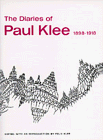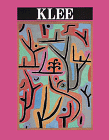|
|
|
 | . index . time line . forum . search . shop |
influence of Friedrich FroebelPaul Klee 1879-1940artist"Color has taken possession of me; no longer do I have to chase after it, I know that it has hold of me forever. That is the significance of this blessed moment. Color and I are one. I am a painter." Paul Klee Swiss-born German artist Paul Klee (1879-1940) defies facile categorization. His ability to perpetuate the legacy of nineteenth-century Romanticism using an entirely new, thoroughly modern visual language set him apart from both his predecessors and his contemporaries. While his pictures demonstrate a distinct indebtedness to Realism and modern abstraction, the major themes of Romanticism (the sentimental, the heroic, the sublime, the fantastic, the naïf, the exotic, the occult, and the grotesque, to name a few) all exist within his imaginary worlds. Like many Romantics before him, Klee equated the artistic expression of transcendental forces with the act of heavenly creation. Klee believed an artist could reveal the mysteries of the cosmos through the careful examination and rendering of organic forms. Using his outstanding skills as a draftsman, Klee thoroughly intertwined transcendental, Romantic themes with a Realist impulse to express the rational, ordered patterns of nature's underlying structure. His work is thus deeply spiritual, focusing on the reality existing beyond the world of appearances. Paul Klee's work shows an unparalleled skill at communicating his reflections on the human condition through ingenious combinations of simple forms, signs, and symbols. The artist's extraordinarily innovative language of abstract figuration, while placing him within the pantheon of modern art's greatest masters, serves as an invitation to the viewer to reflect upon the mysterious meanings and universal themes that dominate his oeuvre and so preoccupy the Romantic mind. In 1921, Paul Klee began teaching at the Bauhaus in Weimar. His work as a professor strenghtened his interests in enlarging the experiences he had undergone until then, especially a methodic work towards coherence of his theoretical approach to art. At the same time Klee devoted himself to painting intensively. In Pedagogical Sketchbook (1925), one of his several important essays on art theory, Klee tried to define and analyze the primary visual elements and the ways in which they could be applied. In 1931, he began teaching at Dusseldorf Academy. In 1933, Klee went to Switzerland. online exhibition of art of Paul Klee . index . time line . forum . search . shop |

Inventing Kindergarten uses extraordinary visual materials to reconstruct this successful system, to teach young children about art, design, mathematics, and nature. Buy This Book, in association with amazon.com, secure online ordering 
Diaries of Paul Klee, 1898-1918 translated from German. Buy This Book, in association with amazon.com, secure online ordering 
Klee Great Modern Masters Series Buy This Book, in association with amazon.com, secure online ordering more featured books |
Copyright © 1998-2002 Froebel Web All Rights Reserved. info@froebelweb.com